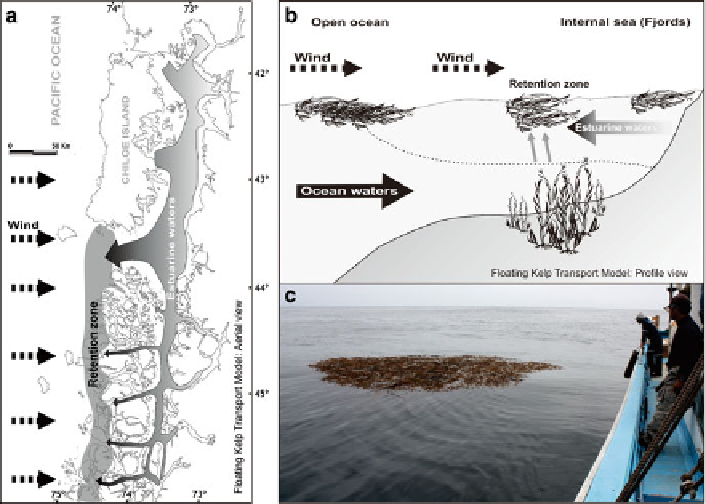Biology Reference
In-Depth Information
17.2.2 Regional Aggregations of Floating Seaweeds
Complex interactions between winds and mesoscale oceanographic features such as
fronts, eddies, and currents determine the spatial distribution of algae at the sea
surface. Accordingly, abundances of floating seaweeds vary substantially on a
regional scale and are often highly unpredictable (Kingsford
1992
; Ing
´
lfsson
1998
). For example, Kingsford and Choat (
1986
) observed consistently higher
densities of floating algae inside than outside transient surface slicks, which were
generated by tidally forced internal waves. In other regions, floating algae accumu-
late along fronts (Kingsford
1995
) where single sporophytes may entangle at the sea
surface to form large floating mats. Franke et al. (
1999
) reported that during calm
summer conditions dense aggregations of floating algae form at boundary zones
between tidal currents of different speeds and directions around the island of
Helgoland (North Sea). Hinojosa et al. (
2010
) could show for the fjords of southern
Chile that floating seaweeds are aggregated in an estuarine front in the large channel
openings by an interaction of wind and the surface outflow of estuarine waters
(Fig.
17.3
). These regions are suggested to act as retention zones, which receive and
accumulate floating seaweeds. Due to the aggregation of floating algae, other
pelagic organisms, and organic matter, these retention areas are considered centers
Fig. 17.3
Retention zones for floating seaweeds formed by winds, currents, and estuarine
influence in the fjord regions of southern Chile, in (
a
) aerial view and (
b
) profile view; figure
modified after Hinojosa et al. (
2010
). (
c
) Floating patch of
Macrocystis pyrifera
; image courtesy of
Iv´n Hinojosa

